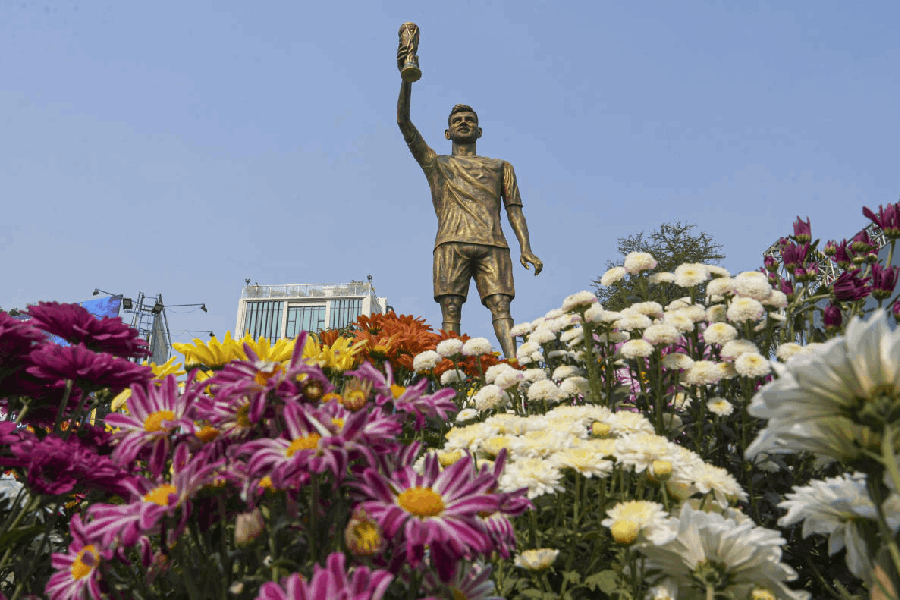The birds do not sing anymore in Pakhiralaya. Home of the birds — that is what pakhiralaya means. It is also the name for a bird sanctuary in Gosaba island of Bengal’s Sunderbans.
Last month’s Cyclone Yaas has done more damage to the natural habitat in these parts than one can fathom. Says Swapan Kumar Mandal, a resident of Gosaba, “There is barely any water to drink; almost all the ponds close to the sea have been contaminated by salt water. This water has also penetrated the top soil. Many fishes have died; worms underneath the soil — earthworms, ringworms, flatworms, snails — all died. The birds have flown away. What will the woodpecker, bulbul and dove feed on?”
In 2009, Cyclone Aila had stripped down a large part of the vegetation cover of the Sunderbans. Whatever vegetation grew thereafter was destroyed by the super cyclone Amphan in 2021. Yaas did not uproot trees but the high tide smashed the embankments and flooded the villages. “The water was stagnant for a week and more. This damaged the roots of big trees and killed them. And the birds lost their homes once again,” says Swapan.
Pakhiralaya is also the name of a village in Gosaba. It has been home to the birds of Sunderbans right from the time of Daniel Hamilton, the Scotsman who developed the area in the early 20th century. He had the vegetation cleared in places, built embankments and made the place habitable.
Anjalibikash Mandal, a retired schoolteacher of Dayapur in Gosaba, recalls that till the 1960s the skies over these parts would be blanketed with birds. He says, “Tens of thousands of them would flutter over our heads noisily!”
It is Anjalibikash who tells the story of how Hamilton sahib discovered a six-kilometre-long colony of birds along the river adjoining Pakhiralaya village. But after the trees were felled, the birds relocated. They crossed the Gomor river and made a new habitat on the other side, where the sanctuary stands now. It is said that those days there were at least 300 species of birds, local and migratory, that could be seen in these parts throughout the year.
In 1983-84, a report was published by the Sunderbans Tiger Reserve that identified 200 species of birds in the area. Of these 60 per cent were local birds and 40 per cent migratory.
Till recently, the Pakhiralaya bird sanctuary was aflutter with the Indian cormorant, egret, heron, black-headed ibis, pintail pochard, brown-headed gull, openbill stork, sandpiper, common kingfisher, brown-winged kingfisher, collared kingfisher, green bee-eater, blue-tailed bee-eater, cuckoos, parakeets, spotted owlet, scops owl and more.
Says Anjalibikash, “The reason why bird numbers started dwindling was human interference. Farming, which was otherwise restricted to the monsoons, started happening in the dry months too. In the 1980s, a government programme was launched; it entailed a thorough study of the birds of Pakhiralaya, including weighing the eggs and the birds.” The objective was to get an idea what birds were flocking to the sanctuary, but the scheme was misused. According to him, the information was used by poachers to hunt and sell birds. “Dheno, a bird commonly found in the rice fields, is now near extinction courtesy the poachers,” adds Swapan.
In the meantime, the number of tourists visiting Pakhiralaya increased.
According to Animesh Mandal, who is a bird researcher and a member of the panchayat samity of Gosaba, human interference and frequent storms and cyclones pose greater challenges to local birds than the migratory kind.
Animesh has been trying to create artificial nests for these birds since Amphan. He ties small earthen pots to the trees in an effort to encourage birds to nest in them.
The local birds need sweet water for survival. Parrots, weavers, drongos, spotted doves and sparrows bathe in the sweet water and also drink it. This year, after Yaas, water from only three ponds in Gosaba can be used for drinking, says Anjalibikash.
In these circumstances, most birds have stopped frequenting the place. “There was a time when people could not rest due to the
non-stop chatter of the spotted doves, rice grains had to be protected with scarecrows. But now we can hardly hear birds cooing or whistling even at a distance. Openbills, locally known as shamukh khol, aren’t visible. There are no shamukhs or snails for them to feed on,” Swapan adds.
So where have the birds gone?
Experts believe the birds do not travel too far away from one location. “After Aila, the white-bellied sea eagle, lesser adjutant stork and barbette shifted from Pakhiralaya to the neighbouring areas — places lying between the Baruipur and Diamond Harbour stretch. These areas don’t have too much human habitation,” says Anjalibikash. The cuckoo, little stint and common redshank have shifted to neighbouring Canning, Champahati, Sonarpur.
Anjalibikash believes this shift is temporary. He says, “It will take at least three years for Gosaba to recover, but the birds will eventually come home.”










